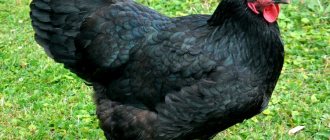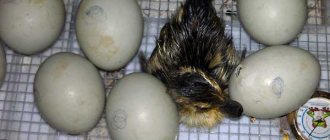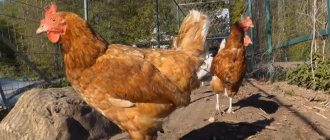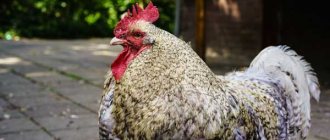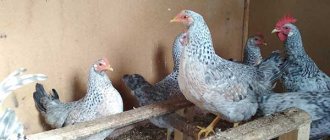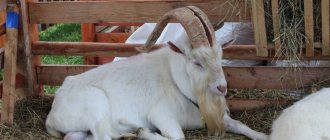Quite a few different factors influence egg production rates in laying hens. And especially important among them is optimal lighting. The length of daylight directly affects the level of egg production of poultry, the growth rate of young animals, the weight and health status of adult chickens. In autumn and winter, natural light is not enough for birds. Therefore, it is so important for any breeder to know how to properly combine it with artificial so that it benefits the laying hens.
Basic rules for creating a light program for laying hens
1st week
During the first week of keeping laying hens, a 20-22 hour lighting regime is used.
Long daylight hours stimulate high activity of chickens, allow them to adapt to the conditions of the poultry house, and quickly find food and water. Alternatively, intermittent lighting, alternating 4 hours of light and 2 hours of darkness, . This regime coordinates the behavior of chickens (time of consumption of feed, water, rest), and also improves the uniformity of the flock.
Light regime for laying hens - 1 week
Light schedule for 1 week of cultivation (Source: Hy-line-brown-management-guide-commercial-layer)
2nd and 3rd weeks
Starting from the second or third week of cultivation, the duration of daylight hours should be gradually reduced to 8-10 hours (by 8 weeks of age) and maintained at this level until the start of light stimulation. Using a short daylight regime for several weeks helps to develop high photosensitivity in birds. In addition, a gradual reduction in the photoperiod when raising young animals allows:
- Optimize the growth and development of birds.
- Achieve high homogeneity.
- Delay and synchronize the onset of puberty.
- Obtain high egg production for laying hens.
- Get a larger egg during the initial laying period.
It is extremely important during the raising of laying hens to avoid any increase in the length of daylight hours before the start of light stimulation.
Laying hens
Light stimulation
The beginning of the period of light stimulation is determined by the age and actual live weight of the laying hens (see cross-breed standard). For most crosses, the optimal age for sexual stimulation is 17-19 weeks, upon reaching the standard weight (1300-1400g).
Light stimulation of hens with insufficient live weight will lead to the production of small eggs in the initial period of laying, a low level of peak productivity, a rapid decrease in egg production in the post-peak period, as well as poor flock survival.
The timing of the start of light stimulation is often used as a tool to achieve the desired egg size. Typically, earlier and harsher light stimulation results in more eggs per initial hen, but smaller eggs. Later or gradual light stimulation will delay the onset of lay, reduce the number of eggs produced per hen, but allow larger eggs to be produced early in production.
For 14- and 15-week-old birds, any increase in light intensity or duration will stimulate sexual maturation and egg production.
The initial one-time increase in illumination should be at least 1 hour. You should then continue to gradually increase the amount of daylight by 15 to 30 minutes per week until you have 16 hours of light. It is preferable to continue the period of increasing daylight hours until peak production (i.e. until approximately 30 weeks of age).
During the productive period, a reduction in daylight hours or lighting intensity should not be allowed, as this will negatively affect egg production.
Light regime of laying hens with light insulation
Lighting program for a 100% light-insulated poultry house. (Source: Hy-line-brown-management-guide-commercial-layer)
How to prevent chicken diseases in winter?
In order for the birds to be healthy and lay eggs, no special measures are needed. Chickens must receive proper care and nutrition. This will help you avoid many diseases and regularly receive fresh eggs.
Prevention is as follows:
- Factors that can become sources of stressful situations are completely excluded.
- The birds are provided with a complete and varied diet.
- If a sick rooster or laying hen is found in the herd, they are immediately isolated.
- The room is insulated and drafts are removed.
- Feeders and drinking bowls are kept clean.
- Additional heating equipment is installed in the room where chickens winter. Air humidity is also constantly monitored.
- Near the roosts there is a mandatory presence of fluttering birds.
- The quality of the floor bedding is checked regularly.
A person who keeps chickens at home should be familiar with bird diseases, their symptoms and treatment. Even basic knowledge will help when problems arise.
Light intensity by week
The lighting intensity during the first week should be at least 30 lux, after which it should be reduced to 5-10 lux for cage and aviary housing, or to 15 lux for floor housing. 2-3 weeks before transferring hens to the laying house, it is recommended to gradually increase the light intensity by 5 lux/week until it reaches the level used in the laying house.
During the laying period, the lighting intensity should be up to 30 lux in light-insulated houses and from 30 to 40 lux in open houses.
Timer with sensor and smooth transition
It is recommended to equip the chicken coop with a timer, as this device can make the life of a poultry farmer much easier. You can choose the simplest model: if the chicken coop is small and the flock is small. The timer is plugged into a power outlet or connected to lighting wiring. Each device requires setting up a specific program: you need to select it. Usually, anyone with at least a little knowledge of technology can easily handle the setup.
After setting up and checking the mode, the poultry farmer can sleep peacefully: the light in the chicken coop will turn on and off at a strictly defined time. And if you purchase a more advanced timer, you can also adjust the decrease/increase in light intensity, decrease/increase its brightness in certain areas of the room. When organizing the proper maintenance of chickens, it is worth taking care of the bacteria in the litter.
The video shows how to set a timer with a smooth transition for a chicken coop:
An example of creating a lighting program for a light-insulated poultry house
Lighting program for laying hens with light insulation
Individual lighting program LIGHT-INSULATED poultry house rearing + egg-laying (planting of young stock in April, start of stimulation in August) (Belarus, Minsk region 27° 34′ E 53° 54′ N)
- 20-22 hour daylight hours and lighting intensity of 30 lux during the first week of cultivation.
- In the period 2-10 weeks, a gradual decrease in the duration of daylight hours to 12 hours. The lighting intensity should be 5-10 lux.
- A constant 12-hour day length before the start of light stimulation.
- A one-time increase in the length of the day by 1 hour upon reaching the standard weight and age of 18 weeks.
- Increase daylight hours weekly by 30 minutes until a total light duration of 16 hours is reached (at 24 weeks). Lighting intensity - 30 lux.
- Constant daylight hours until the end of the productive period.
Feeding day-old young animals
The diet of small chickens up to 2-4 months is designed so that the growing body receives important nutritional elements. In addition to a clear distribution of the balance of carbohydrates, proteins, vitamins and minerals, it is necessary to strictly adhere to the feeding schedule. Day-old chicks are given crumbly porridge (mash) from hard-boiled, well-crushed yolk, millet cereal, finely crushed wheat grains, cleared of the top layer, diluted with a small amount of hot water. This feed is distributed to newly hatched livestock immediately after preparation (no later than 30 minutes).
The shells of grain crops: barley, oats, wheat contain a lot of fiber, which is difficult for early laying hens to digest. They must be cleaned during preparation.
In addition to the mash mixture, newborn laying hens will benefit from a finely ground egg sprinkled with corn or semolina (sprinkling is recommended so that pieces of yolks and whites do not stick to the fluff or paws of the chicks), and mixtures of ground grains:
- barley;
- corn;
- oats;
- peas
For mash, only medium-ground grain is suitable for day-old chicks. Too small particles of food enter their nostrils, causing irritation of the mucous membrane.
For chickens, you can also use ready-made feed, called “zero” or “starter”. They consist of crushed grains, amino acids, vegetable fats and a small amount of fishmeal.
Recipe for complete feed for young chickens of egg-cross breeds
| Ingredients | Age of young animals (days) | ||
| 1-30 | 31-90 | 91-150 | |
| Dry return | 1 | — | — |
| Fish flour | 3,9 | 4 | — |
| Corn | 17,4 | 10 | 10 |
| Wheat | 35 | 41 | 18 |
| Barley | 16 | 18 | 34 |
| Hydrolytic yeast | 4,5 | 4 | 2,9 |
| Meat and bone meal | 2,5 | 3 | 3 |
| Sunflower meal | 15 | 5,3 | 1 |
| Herbal meal | 3,5 | 5 | 8 |
| Ground shell | 1,2 | 1,5 | 1,3 |
| Table salt | — | 0,2 | 0,3 |
| Wheat bran | — | 8 | 10 |
| Bone flour | — | — | 1,5 |
| Millet | — | — | 10 |
Example of a lighting program for an open house
Laying hen lighting program - daylight
Individual lighting program OPEN poultry house rearing + egg laying (planting of young stock in April, start of stimulation in August) (Belarus, Minsk region 27° 34′ E 53° 54′ N)
- 20-22 hour daylight hours and lighting intensity of 30 lux during the first week of cultivation.
- In the period 2-13 weeks, a gradual decrease in the duration of daylight hours to 16 hours 15 minutes. This is the maximum duration of natural daylight in the period before the start of light stimulation. The lighting intensity should be 5-10 lux.
- A constant 16:15 day length before the start of light stimulation for the 17th week.
- A one-time increase in the length of the day by 30 minutes upon reaching the standard weight.
- Increase daylight hours weekly by 15 minutes until a total lighting time of 17 hours and 15 minutes is reached. The lighting intensity during the egg-laying period should be 30-40 lux.
- Constant daylight hours until the end of the productive period.
Implementation of a lighting program in a poultry house for laying hens
The optimal solution when organizing the lighting of a laying hen poultry house is the use of LED lamps. LED lighting guarantees uniform light distribution as well as the required intensity at every stage of production. In addition, it has a high degree of electrical safety for personnel and low power consumption. The lighting system is designed specifically for each room in accordance with the growing purposes. Connecting the system to a microclimate controller ensures that the lighting operates in autonomous mode according to the established light schedule.
LED lighting from SAGRADA:
- Required light spectrum
- Long service life: more than 100,000 hours.
- The warranty period is 5 years.
- Adjustable lighting brightness within 0.2-100%.
- Anti-flicker at low intensity.
- The presence of a “sunrise-sunset” mode.
- Automatic operation according to a given schedule.
- High degree of protection of lamps (IP-68): dust- and water-proof, washable at pressures up to 100 bar.
- The lighting project is made individually for each customer. This allows you to select lamps of a suitable type, create an effective lamp placement scheme that ensures uniform lighting in the room, without dark areas and shadows.
- The lighting kit includes lamps, a power cabinet, tension cables and all the necessary elements for installation.
To place an order for LED lighting for laying hens, contact us!
CONTACT!
Author of the article: Morozova S.A., technologist at SAGRADA.
What lamps are suitable for a chicken coop?
The productivity of chickens also depends on what kind of light to use. During observations, it was found that blue light calms birds and reduces aggression. When exposed to blue-green light, chicks develop faster, while red-orange light causes birds to go through precocious puberty.
Red light leads to a decrease in egg production of chickens. But cases of cannibalism among birds are decreasing. Moreover, during the operation of red lamps, the most electricity is consumed.
Red light is ineffective
The number of lamps depends on the area of the room: 60 watts per 6 meters square. Farmers use lamps with a flickering effect.
However, the pulsation intensity should not exceed 26,000 hertz, as this impairs the vision of laying hens. To ensure uniform lighting in the chicken coop, the light bulbs are placed at the same distance from each other.
Sodium light bulbs are also installed in the room. They have a common cartridge consisting of two devices. Each of them has a power of at least 50 watts.
They are included both together and separately. The peculiarity of such a lamp is that the lighting covers the entire area of the chicken coop, dark corners disappear.
Do not run electrical cables through the floor of the chicken coop. It is wet, so a short circuit can occur, which is life-threatening for the chickens. A panel is installed outside the perimeter of the chicken coop, allowing you to turn the light on and off. To prevent chickens from touching the light bulbs, use thick shades.



